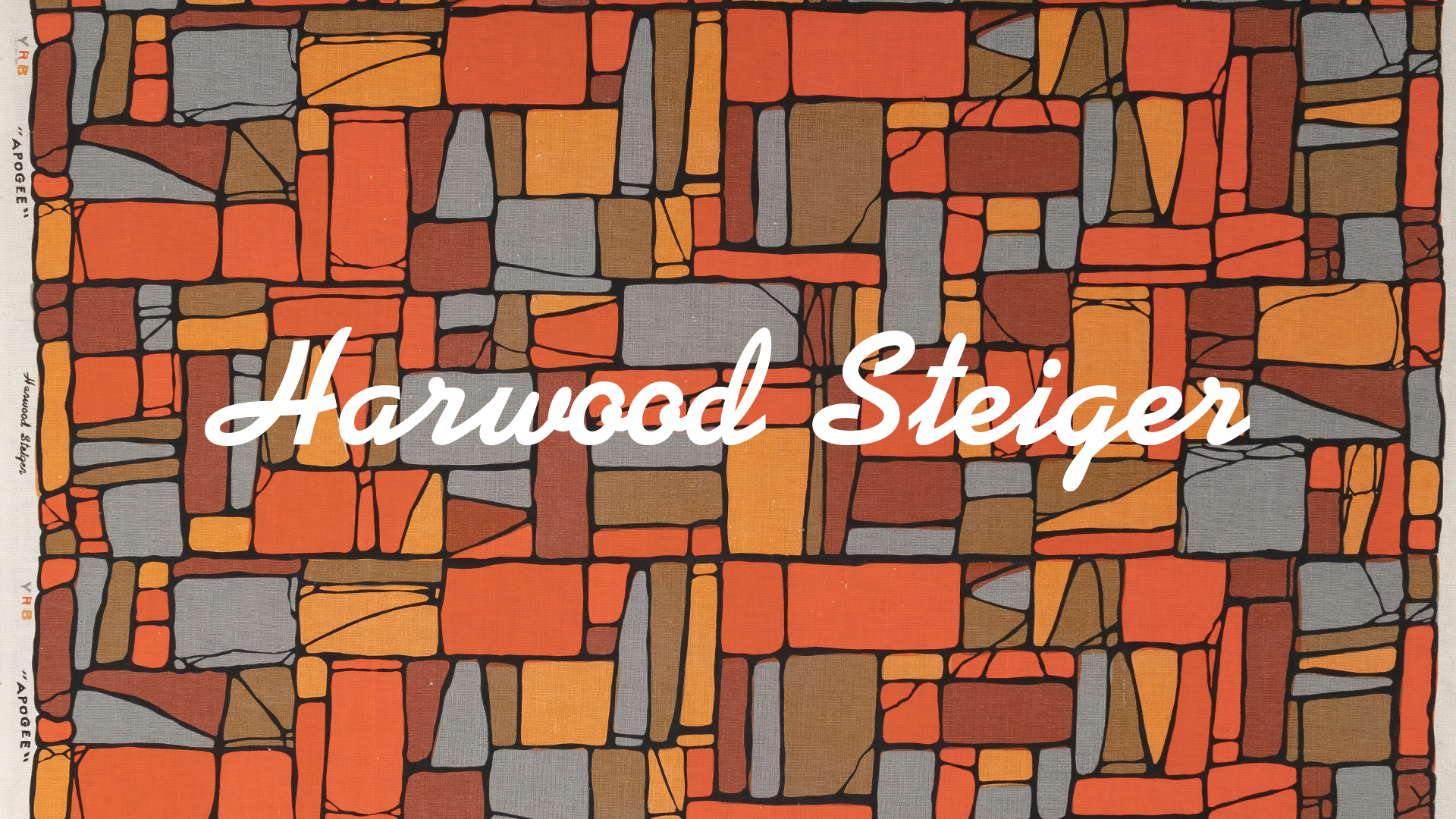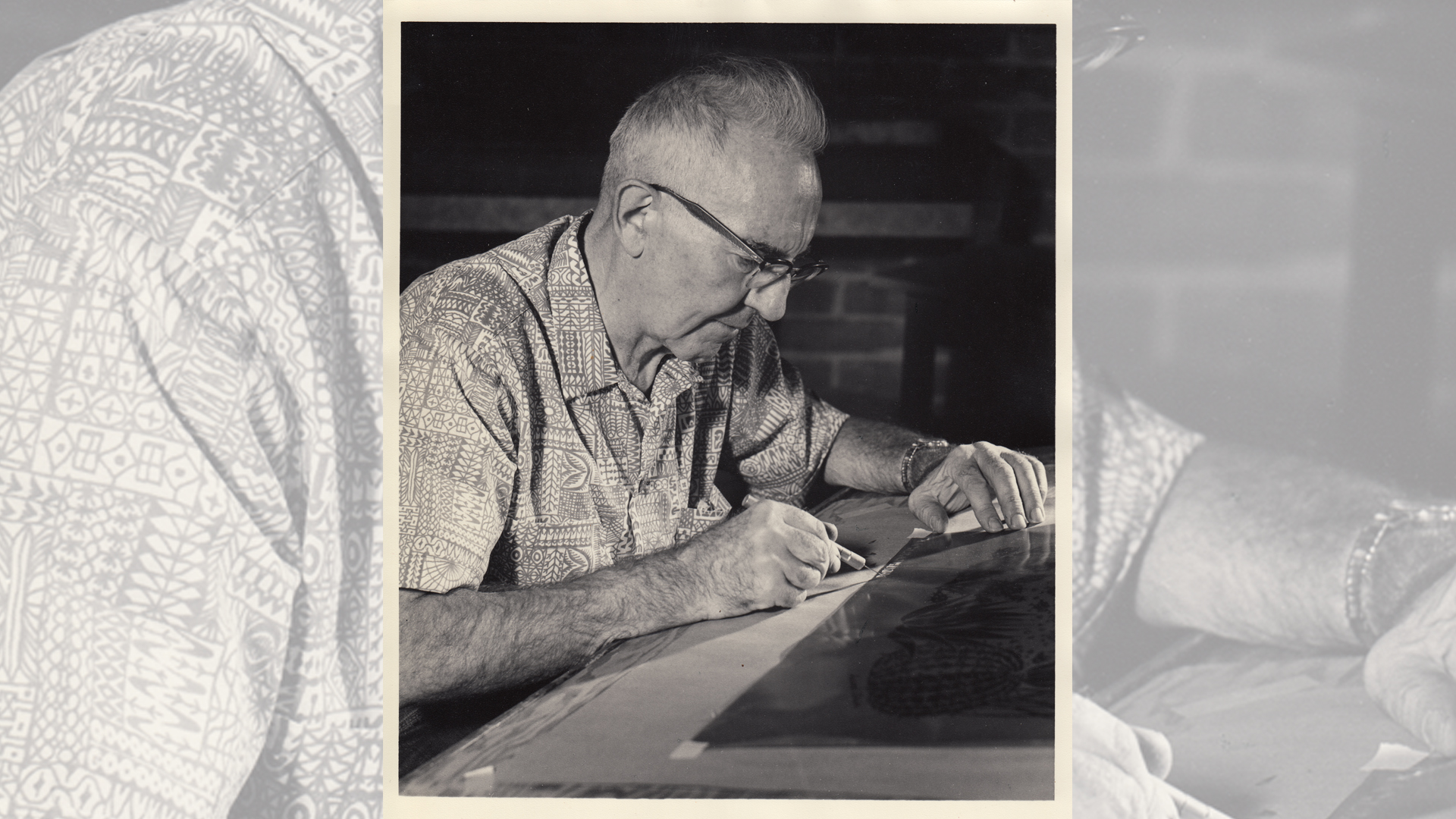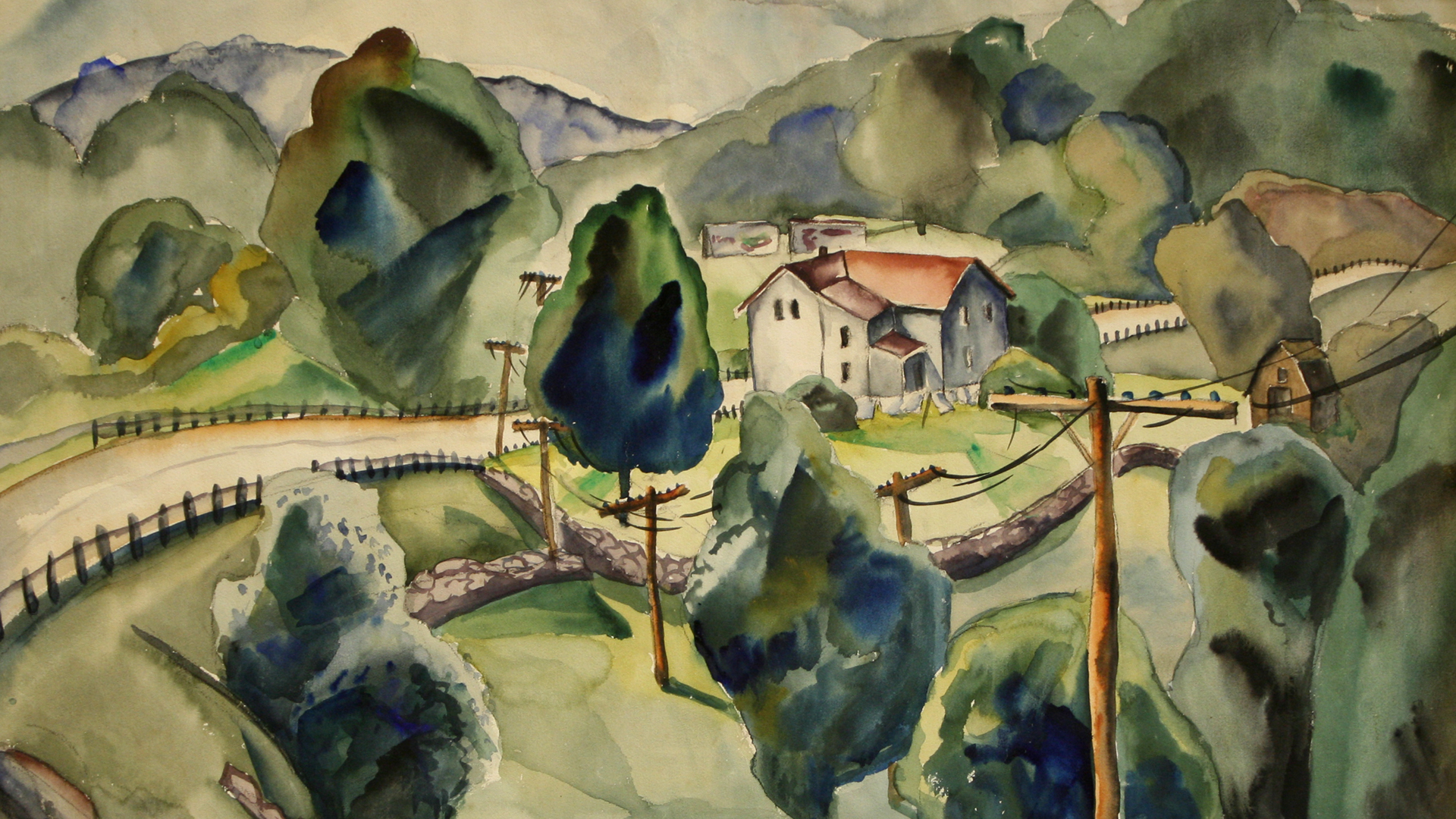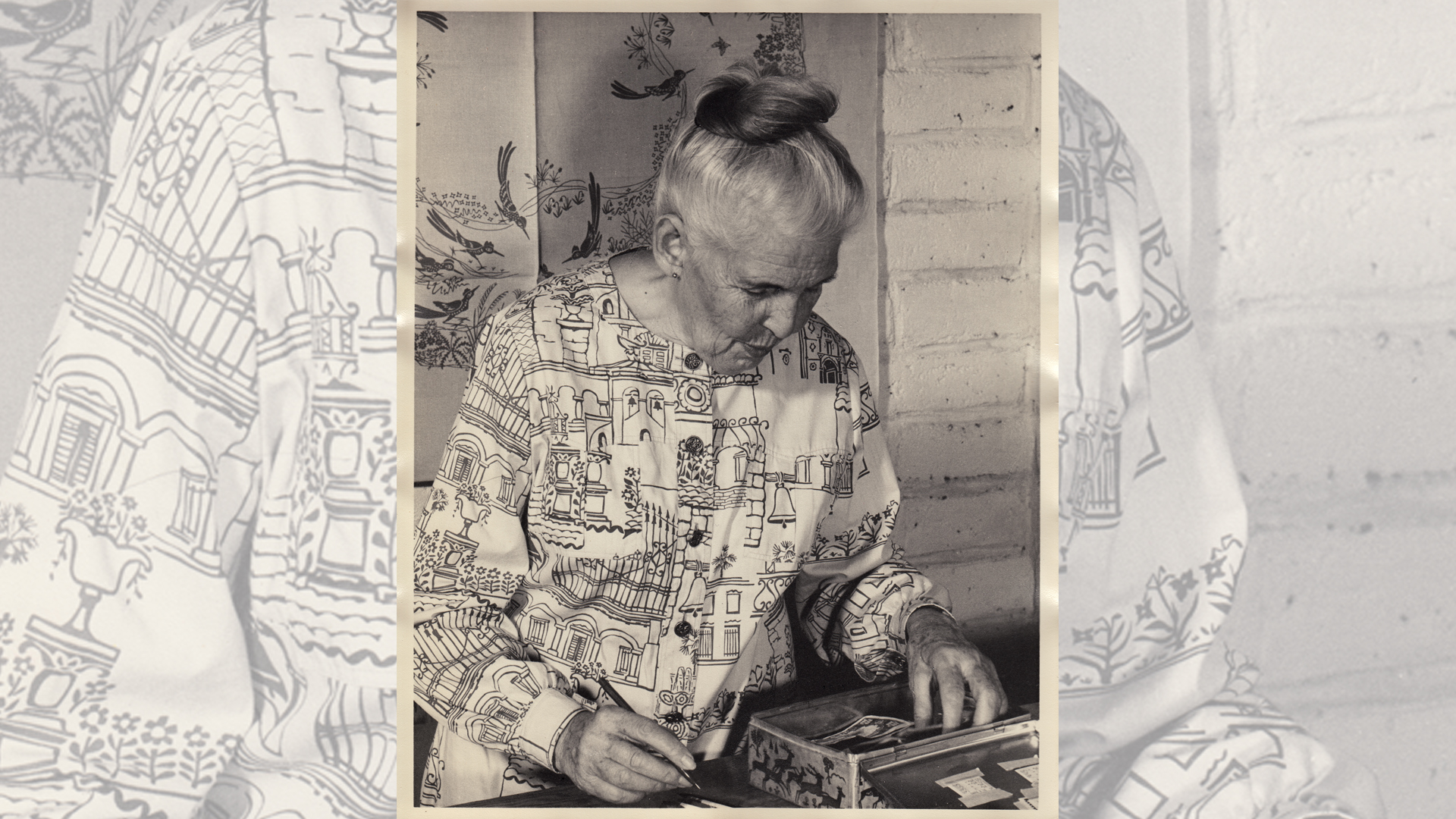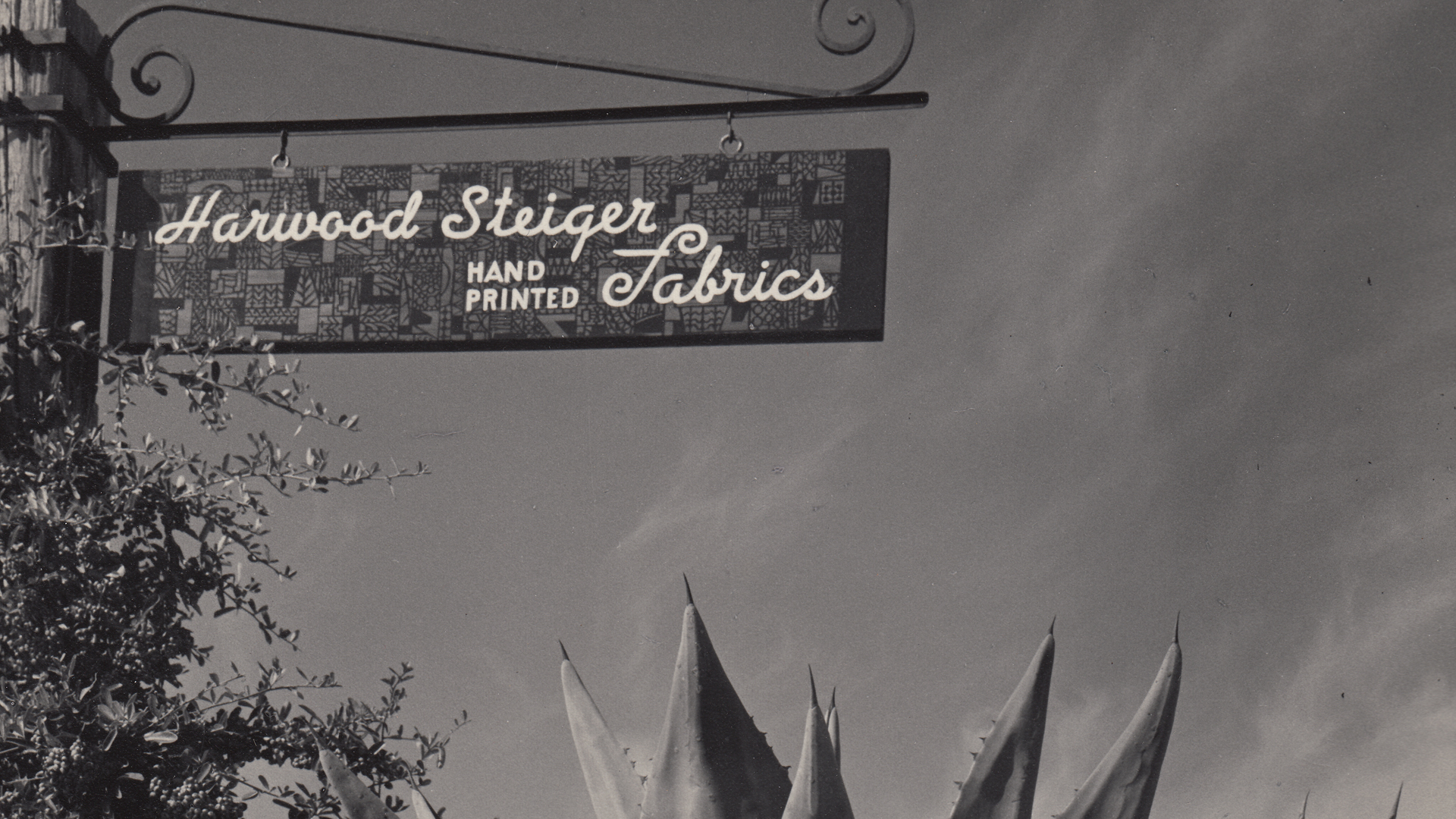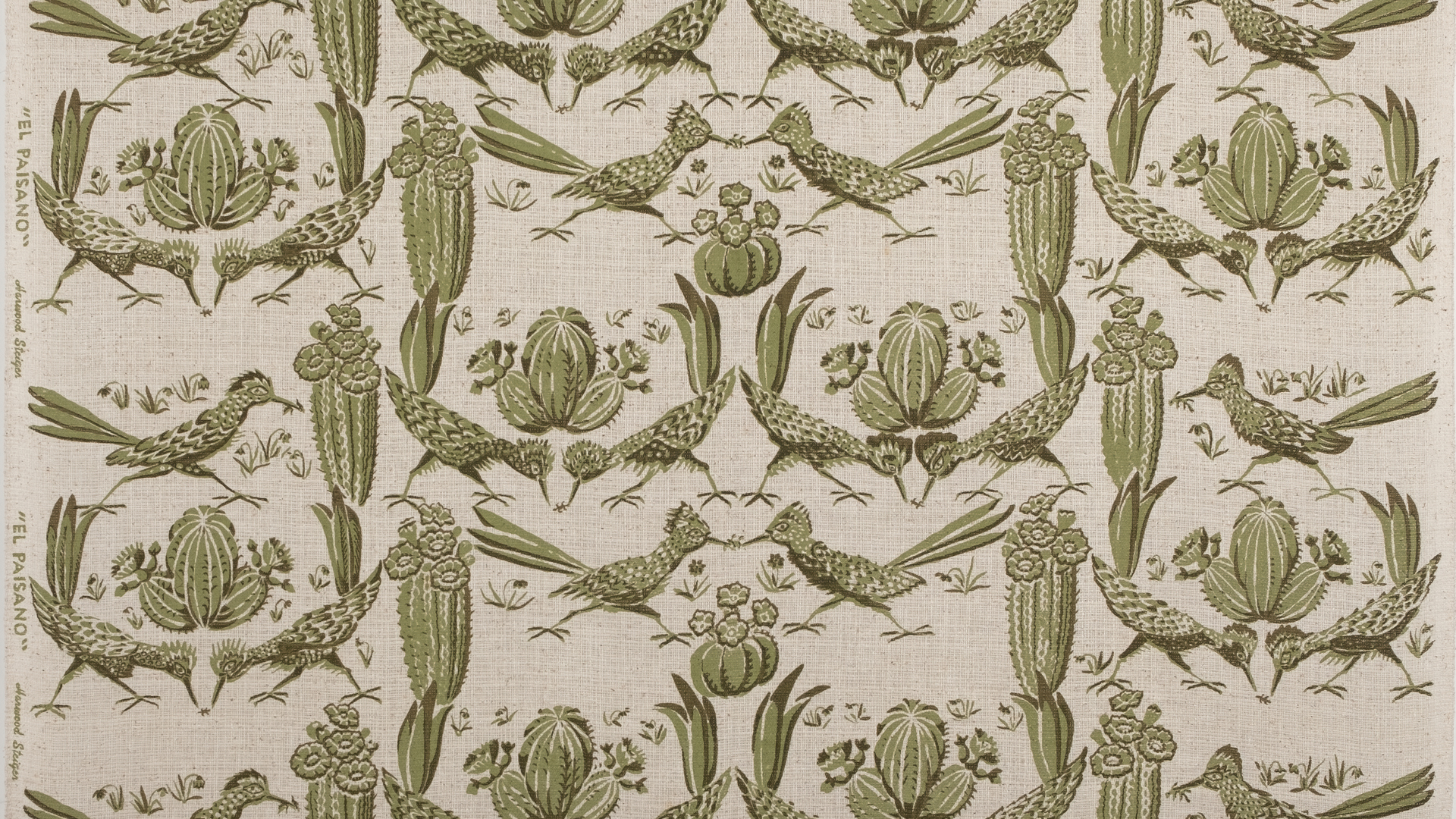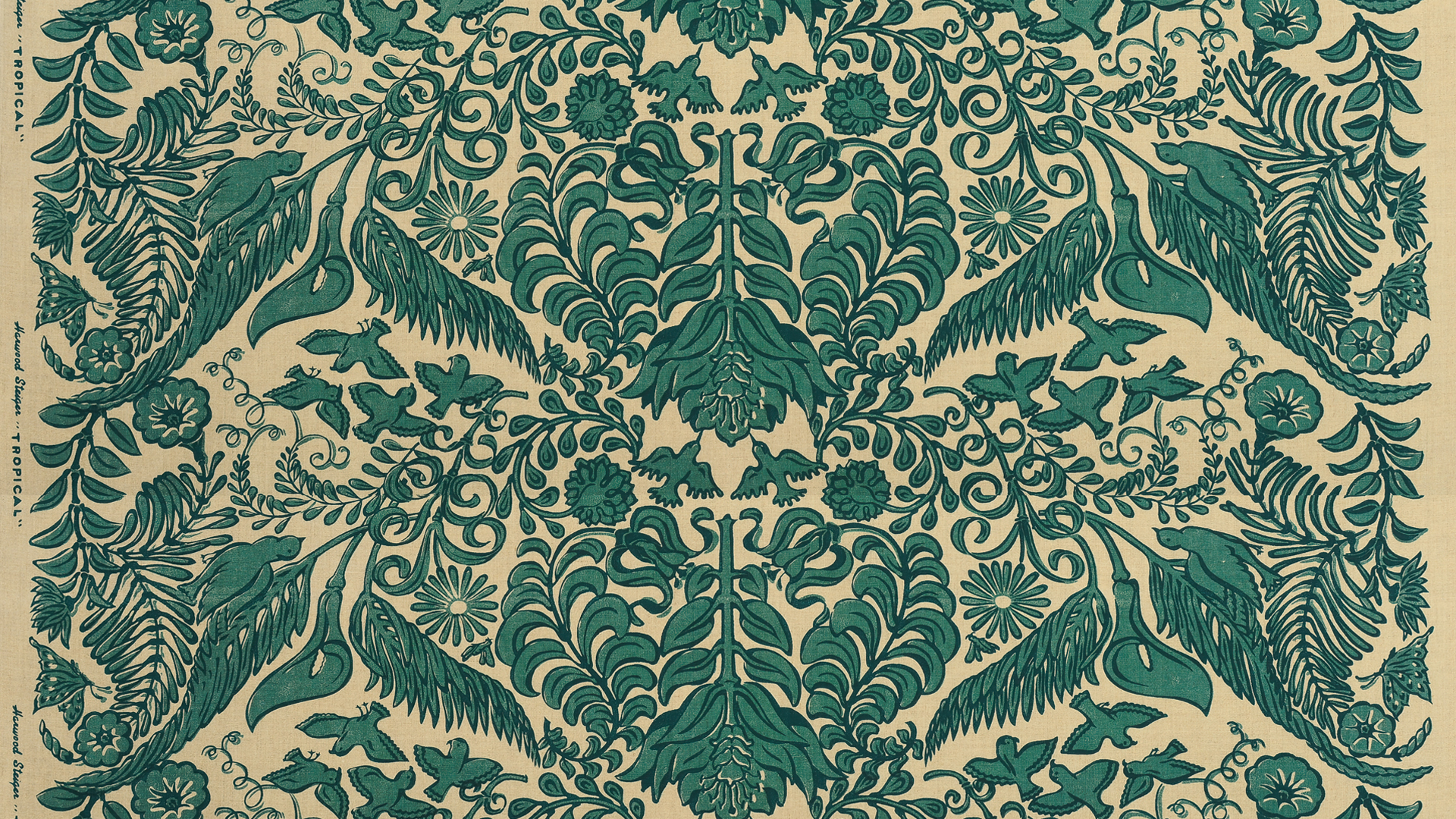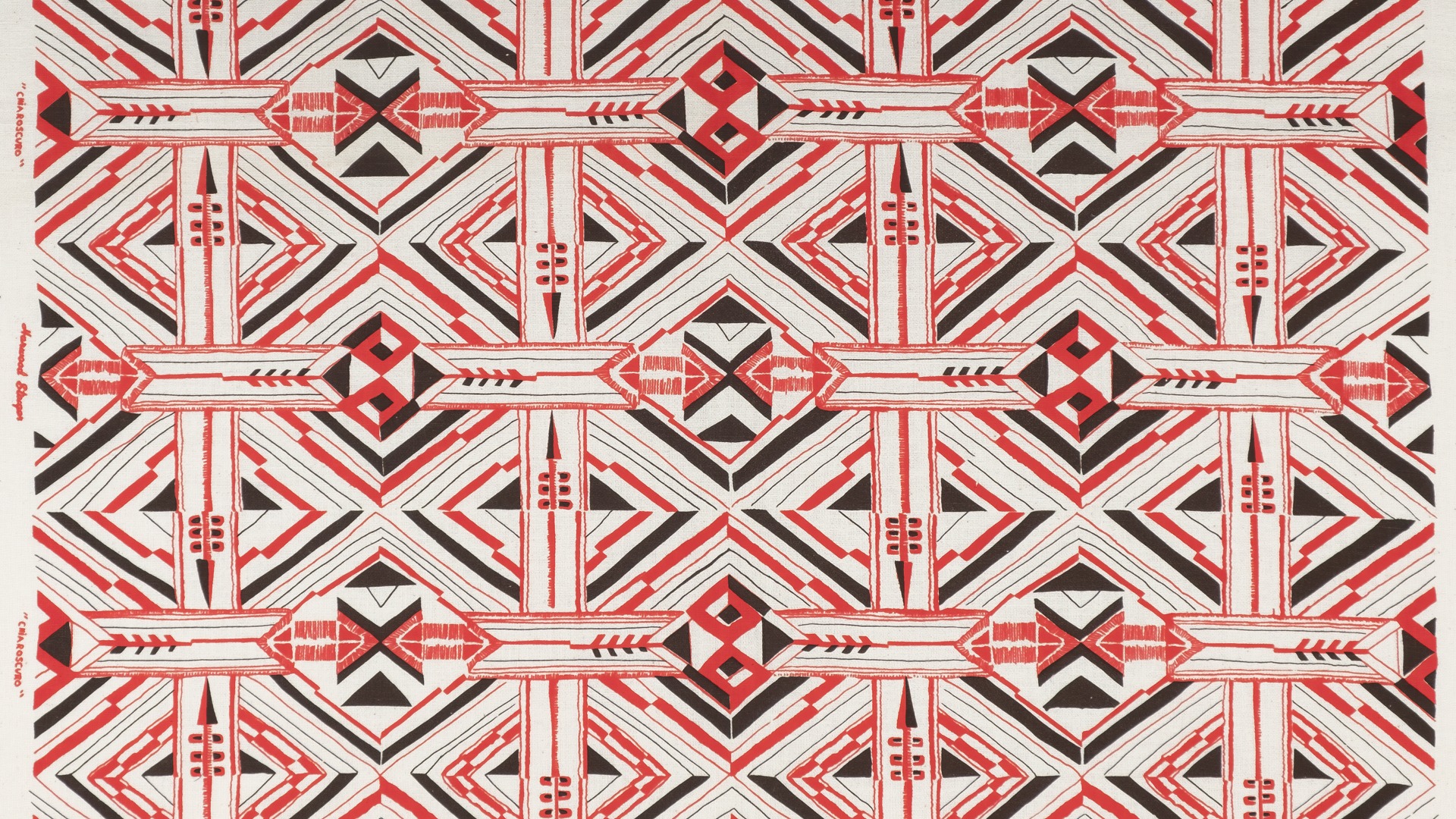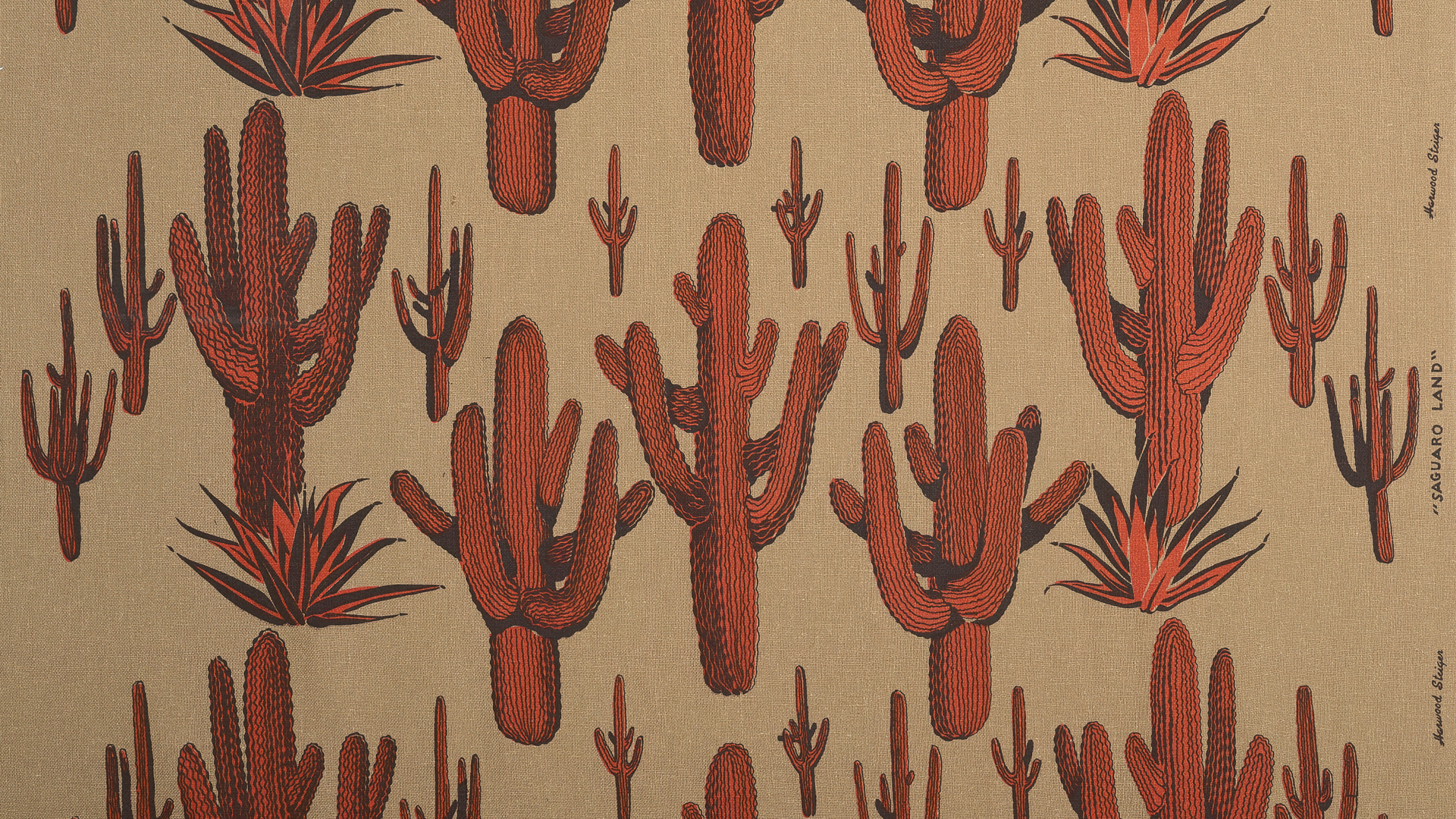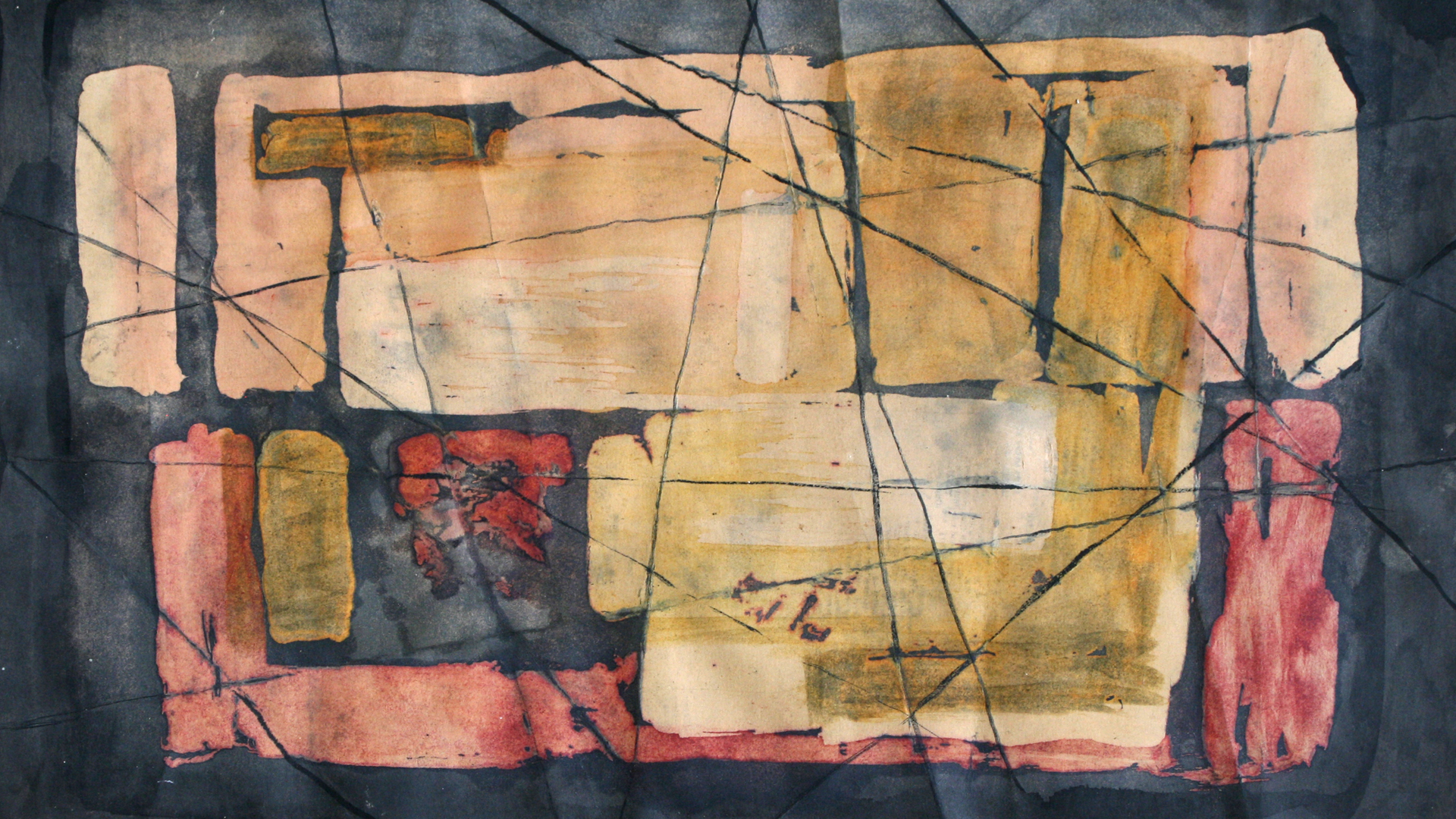Over three decades the Steigers created a vocabulary of graphic fabric patterning that became part of southern Arizona style. Their work offered a functional modernist interpretation of the Southwest. Although the designs are undated, the work falls into a series of sub-categories including pattern, panels, borders and stand-alone pieces that represent: the flora and fauna of the Sonoran Desert; graphic representation inspired by mesoamerican cultures; abstract patterns, basket weave designs using repetition of graphic images; ditzy patterns with botanical and desert elements scattered across the fabric; floral patterns and geometric patterns. The Steigers’ masterful use of ink and fabric color are highly considered and give the designs a powerful identity. Despite the diverse subjects matter, broad array of different patterns and Harwood Steiger Fabrics have a distinct and recognizable graphic signature and have stood the test of time.
By 1958 Harwood was an active part of Southern Arizona’s arts community. In February he was part of an exhibition at the Tucson Art Center presented by the Tucson Fine Arts Association called “Discover Crafts in Tucson”. The show presented the Harwood Steiger fabrics along side other noted tucson textile designers including Berta Wright, Ruth Brown, Julie Brix and Catharine Lancaster. In 1959, examples of the Steigers’ work was shown in the Tucson Art Center exhibition “Crafts as Art in Tucson”.
By 1959, Harwood Steiger fabrics were being sold at the noted desert designer Leionne Salter’s Arizona Studio. In Tubac the Steigers were integral in launching the Tubac Festival of Arts and in 1961 Harwood Steiger fabrics were honored with an award from the Festival. In the late 1960s the popularity of the fabrics was surging. High-end dress shops including Arizona Originals in Tucson promoted the availability of Harwood Steiger fabric for custom designs. The fabrics designs had become part of the graphics identity of Southern Arizona and the America Southwest.
Sophie died in March 1979 and Harwood in August 1980. The studio continued on under the direction of relatives and former employees for a number of years but innovation and new designs stoped. The influence of Harwood Steiger is still present, not just in the tablecloths, curtains, dresses, and upholstery that sprinkle the interiors of houses throughout the southwest, but in a rich sophisticated style that continues to express the vision of post WWII Arizona. In 2018 the Tucson Historic Preservation Foundation presented the first exhibition of the Harwood Steiger fabric designs as part of Tucson Modernism Week.
Since 2012, the Tucson Historic Preservation Foundation has proudly served as the exclusive curator of Harwood Steiger’s iconic designs. For licensing inquiries, please contact: info@preservetucson.org.
In addition to stewardship and preservation, the Foundation also produces a select line of limited-edition products.
Harwood Steiger fabric and wallpaper are available through Kravet.
